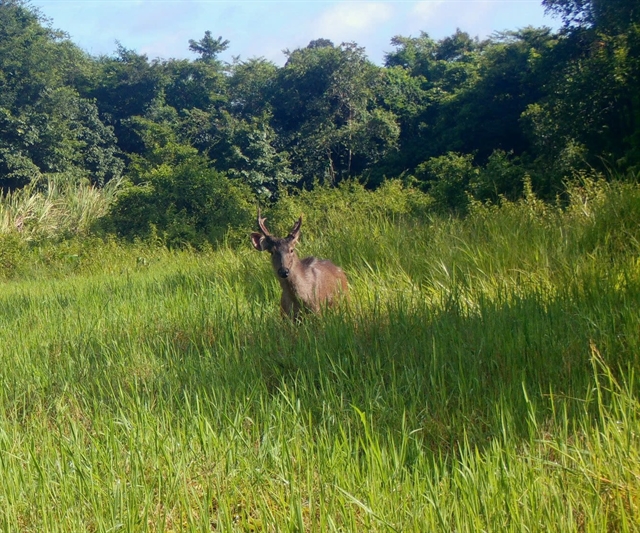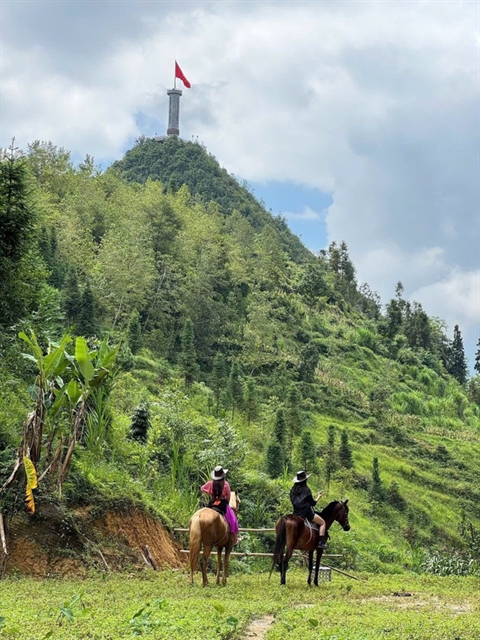 Environment
Environment

 |
| An Eld’s deer is captured on a camera trap installed in Chư Mom Ray National Park in Sa Thầy District, Kon Tum Province. Photo courtesy of Chư Mom Ray National Park |
QUẢNG NGÃI — Eld’s deer, a rare species listed in Việt Nam’s Red Data Book, have been discovered living under the ancient forest canopy of Chư Mom Ray National Park in Sa Thầy District, Kon Tum Province.
Facing the threat of extinction, Eld’s deer (Rucervus eldii) are gentle animals with elongated faces, large ears, multi-branched antlers, soft fur and reddish-brown or golden backs.
The animals were captured in photographs from camera traps installed in the park and, in a rare encounter, were also spotted unexpectedly by patrolling park rangers.
Director of the Chư Mom Ray National Park Management Board Đào Xuân Thủy said coming across the species requires luck, as they tend to appear suddenly and unpredictably. Even those determined to see them might fail to do so.
Eld’s deer are native to Southeast Asia and mainly inhabit forests interspersed with grasslands and scattered trees, feeding primarily on grasses.
“It is not yet possible to determine exactly how many Eld’s deer individuals are currently living in Chư Mom Ray National Park. To find out, we will need to conduct a comprehensive survey, with counting and analysis. For now, the park is monitoring the species through images and implementing strict protection measures,” Thủy said.
With an area of over 60,000ha, Chư Mom Ray National Park is among Việt Nam’s most biodiverse sites. In addition to Eld’s deer, it is home to more than 1,000 animal species from common wildlife to rare, endangered creatures such as gaur, Asiatic black bears, silvery langurs, black-shanked douc langurs, grey-shanked douc langurs and red-shanked douc langurs.
At present, the park is installing additional motion-sensor cameras and camera traps across its forests. In August, images and data collected will be analysed to identify further rare species and assess their conservation status. — VNS




